Dennis FeldmanÔÇÖs Guide to Hollywood BoulevardÔÇÖs Fantastic Weirdos, 1969ÔÇô72
ÔÇ£I would walk Hollywood Boulevard with this Rolleiflex camera,ÔÇØ remembers Dennis Feldman. ÔÇ£I would say to someone, ÔÇÿWould you mind if I take your picture?ÔÇÖ They would usually ask me ÔǪ ÔÇÿHow do you want me to be?ÔÇÖÔÇØ
His new book Hollywood Boulevard came out of that. ItÔÇÖs a time capsule of the long-ago outlandish. He captured Southern California characters who strutted up and down the Walk of Fame between 1969 and 1972 with square-format portraits. ÔÇ£I kind of made this book in 40 years, and I also made this book, I guess, in the last two,ÔÇØ he says. ÔÇ£ThereÔÇÖs a famous story where William Goldman supposedly wrote a screenplay in two weeks, and he explained that ten years earlier he had written a first draft and put it in a box, and heÔÇÖd taken it out ten years later and wrote it in two weeks of intense work. He said, ÔÇÿWhat, did I write it in two weeks or ten years?ÔÇÖÔÇØ
As a ÔÇ£fairly shyÔÇØ 23-year-old son of a movie producer who grew up in Los Angeles, ÔÇ£surrounded by children whose parents were in the movie industry,ÔÇØ he at first ÔÇ£kind of wanted to be a writer-director, and when I was early in college, someone came in and said, ÔÇÿYou canÔÇÖt be a director if you donÔÇÖt know about photography,ÔÇÖ and I ran over and got myself into the photography class.ÔÇØ So he did, and started shooting ÔÇ£obsessively.ÔÇØ
Influenced by the era-defining photo books of Walker Evans and Robert Frank, Feldman had ÔÇ£a very strict aesthetic about not interfering in any senseÔÇØ when he took photos of people. He wanted the pictures to be as documentary as possible. He would ask permission and ÔÇ£counteract the clich├® of smiling for a photo,ÔÇØ telling people, ÔÇ£Just be yourself ÔÇö you donÔÇÖt have to smile.ÔÇØ Then he ÔÇ£looked into the ground glass and disappeared as best I could.ÔÇØ
Dennis thought of himself as a kind of 1970s American version of August Sander, who in the 1920s and 1930s catalogued Germans flatly, taxonomically, with a camera. ÔÇ£I was doing a catalogue of Americans by psychology.ÔÇØ
Dennis decided to look for these people in a place he thought ÔÇ£was iconic and had very strange charactersÔÇØ ÔÇö Hollywood Boulevard between Highland Avenue and Vine Street. ÔÇ£It was really gritty and grubby,ÔÇØ he says about the stretch. ÔÇ£People were attracted by the Hollywood myth but they stayed for the cheap housing. The tourists didnÔÇÖt come down much from beyond Highland. These were the regulars, the people who lived around there.ÔÇØ
ÔÇ£Everybody was an individual as well as a type,ÔÇØ he says, speaking specifically to a photo of ÔÇ£twinningÔÇØ hippies with long hair in floral blouses, but about the project more generally. ÔÇ£I had a very strong sense of their individuality as a person and of their universal struggles to be what they had chosen.ÔÇØ
Forty-five years later, the Hollywood Boulevard types are different now. The Hollywood myth is different now, too: more velvet rope, and fewer people stepping off a bus with their ambitions in a bag. Now they can launch themselves on Instagram and Vine from back home, wherever theyÔÇÖre from, and maybe, then, have no need for Dennis Feldmans.
The following are a few of his photos.

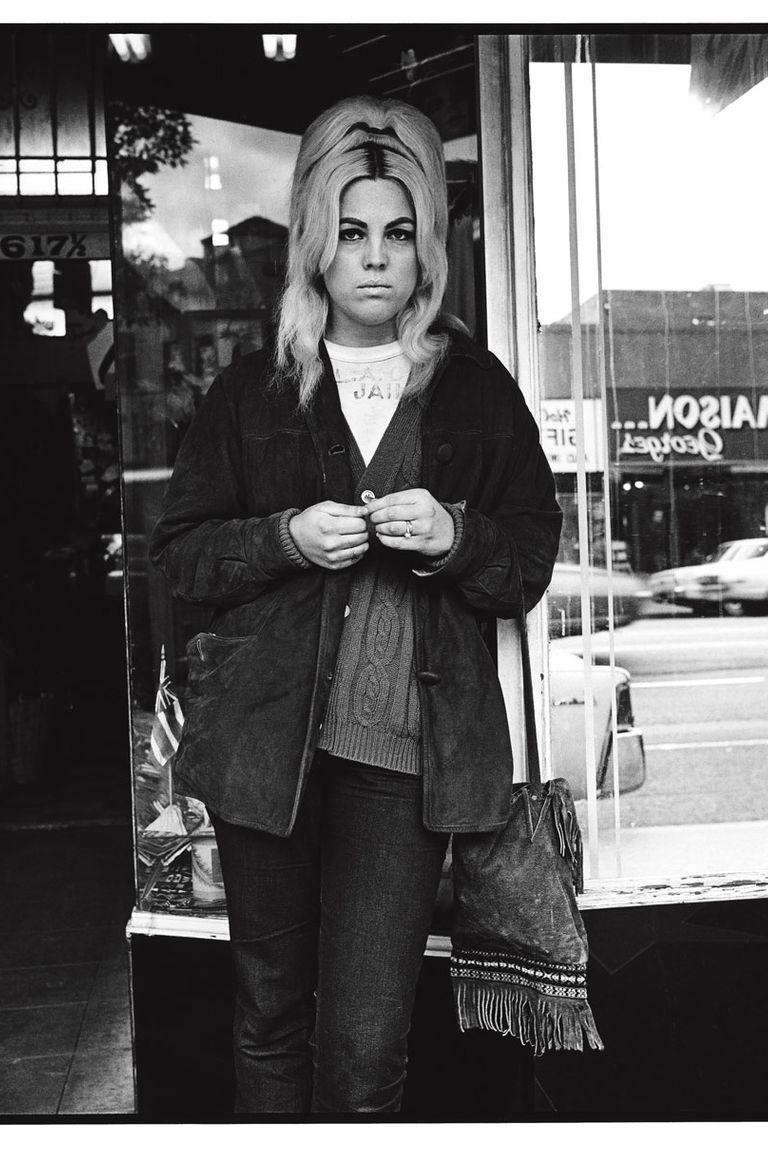
ÔÇ£I photographed two bikers individually and then together. She was begging, and I said, ÔÇÿIs she with you? Is she anybody with you?ÔÇÖ One of the guys sa...
ÔÇ£I photographed two bikers individually and then together. She was begging, and I said, ÔÇÿIs she with you? Is she anybody with you?ÔÇÖ One of the guys said, ÔÇÿShe better be.ÔÇÖ I said, ÔÇÿWould you mind if i took her picture?ÔÇÖ He said, ÔÇÿYeah,ÔÇÖ and I went over and took her picture ÔÇö sheÔÇÖs got so much feeling. ThereÔÇÖs kind of depth to her, a sense of somebody who is very actively alive behind those eyes.ÔÇØ
Photo: Dennis Feldman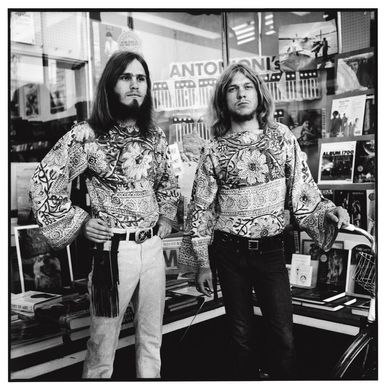
ÔÇ£Part of being a hippie was that suddenly you didnÔÇÖt have to be buttoned down. There was a freedom to be silly. My father always tried to be dignified...
Part of being a hippie was that suddenly you didnt have to be buttoned down. There was a freedom to be silly. My father always tried to be dignified. He would never have dreamed of having people see him be silly. The Beatles were pretty silly. There were all kinds of freedoms opened up, just the freedom to be silly, its an absurd freedom, right? But not to have to be dignified  I was photographing a kind of liberation that I was aware of, but its much clearer in historical perspective.
Photo: Dennis Feldman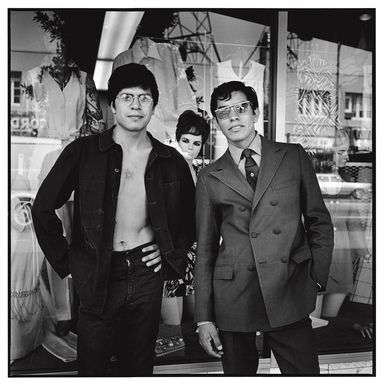
ÔÇ£I was more interested here in the fact that their identities had so melded. ThereÔÇÖs a series here of people who have kind of ÔÇÿtwinnedÔÇÖ themselves ÔÇö p...
ÔÇ£I was more interested here in the fact that their identities had so melded. ThereÔÇÖs a series here of people who have kind of ÔÇÿtwinnedÔÇÖ themselves ÔÇö people merging identities, you know, people supporting each other's identities with these set styles ÔǪÔÇØ
Photo: Dennis Feldman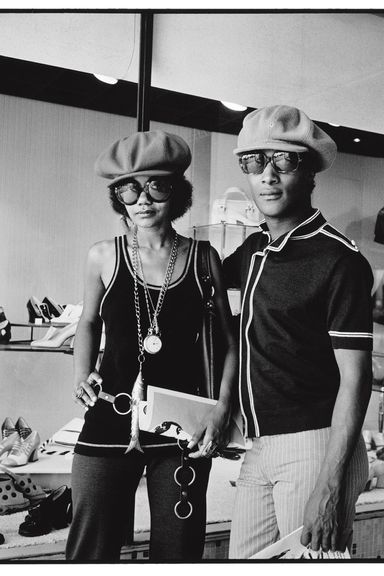
ÔÇ£This African-American couple is kind of mod cute, with matching lines. People are supporting each otherÔÇÖs identities, and theyÔÇÖre choosing together. ...
ÔÇ£This African-American couple is kind of mod cute, with matching lines. People are supporting each otherÔÇÖs identities, and theyÔÇÖre choosing together. There are a lot of different kinds, and theyÔÇÖre still choosing together.ÔÇØ
Photo: Dennis Feldman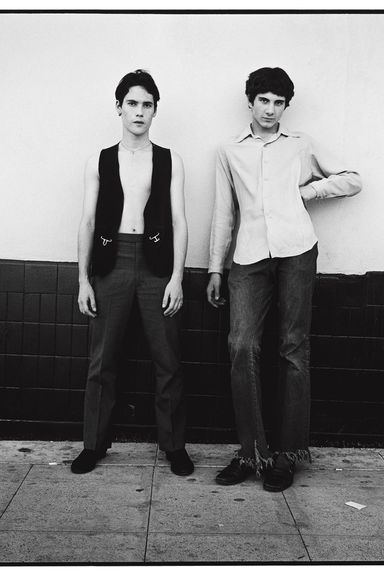
ÔÇ£IÔÇÖve noticed thereÔÇÖs a lot of skin in this book, a lot of men exposing their chests, which you donÔÇÖt see that much anymore. ItÔÇÖs a very sexualized mo...
ÔÇ£IÔÇÖve noticed thereÔÇÖs a lot of skin in this book, a lot of men exposing their chests, which you donÔÇÖt see that much anymore. ItÔÇÖs a very sexualized move ÔÇö it was a period of sexual liberation. There was a performance aspect, and an exposure aspect. An aspect of, we can show ourselves.ÔÇØ
Photo: Dennis Feldman
ÔÇ£I was really desperate to get these pictures, and to get every piece of detail I could as sharp and as full as I could. I believed in it, I really ne...
ÔÇ£I was really desperate to get these pictures, and to get every piece of detail I could as sharp and as full as I could. I believed in it, I really needed to do that.ÔÇØ
Photo: Dennis Feldman
ÔÇ£These were the icons in the imagination of America, and the heroes of the movies in a lot of cases ... or the villains.ÔÇØ
Photo: Dennis Feldman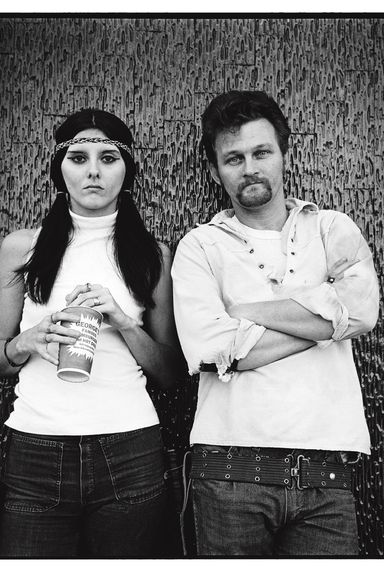
ÔÇ£People were sweet, they were very generous with me in being who they were ÔÇö you know, I did it right away, only a few shots. They really put it out t...
ÔÇ£People were sweet, they were very generous with me in being who they were ÔÇö you know, I did it right away, only a few shots. They really put it out there. They were really trying to be somebody who shows that.ÔÇØ
Photo: Dennis FeldmanÔÇ£This guy struck me as an Elvis ÔÇö totally struck me as an Elvis. The rock-and-roll archetype was really strong, and still is. HeÔÇÖs all in white. Somet...
This guy struck me as an Elvis  totally struck me as an Elvis. The rock-and-roll archetype was really strong, and still is. Hes all in white. Something about the hair, the clothing. I dont know what 
Photo: Dennis FeldmanÔÇ£The way everybody holds their cigarette I find very significant.ÔÇØ
Photo: Dennis FeldmanÔÇ£I was very conscious that everybody was an individual as well as a type. I had a very strong sense of their individuality as a person and of their un...
ÔÇ£I was very conscious that everybody was an individual as well as a type. I had a very strong sense of their individuality as a person and of their universal struggle to be what they had chosen.ÔÇØ
Photo: Dennis FeldmanÔÇ£I made this other book, American Images. I never had distribution for the book, so it didnÔÇÖt get out much. I put the photo of the father and the kid ...
ÔÇ£I made this other book, American Images. I never had distribution for the book, so it didnÔÇÖt get out much. I put the photo of the father and the kid with the camera on the front because i felt it was very personal to me: a kid with a camera around his neck, and the father with stars in his eyes.ÔÇØ
Photo: Dennis FeldmanÔÇ£ItÔÇÖs clear to me that this mother has just taken her daughter to the hairdresser and giver her a full ... whatever thatÔÇÖs called ... this is a moment...
ÔÇ£ItÔÇÖs clear to me that this mother has just taken her daughter to the hairdresser and giver her a full ... whatever thatÔÇÖs called ... this is a moment of initiation where this mother is saying: This is how a woman is. This is the first trip to the hairdresser. This is how youÔÇÖre beautiful. This girl just seems to love her mother for doing that.ÔÇØ
ÔÇ£ThatÔÇÖs a package IÔÇÖve only seen in the movies, that kind of package. He looks like he just showed up, and these are archetypal moments, when you show...
ÔÇ£ThatÔÇÖs a package IÔÇÖve only seen in the movies, that kind of package. He looks like he just showed up, and these are archetypal moments, when you show up to the city with all your ambitions in a bag.ÔÇØ
Photo: Dennis FeldmanÔÇ£Coming to Hollywood Boulevard and leaving Hollywood Boulevard have struck me as being significant ÔÇö a pattern of capitalism to come to the big city w...
ÔÇ£Coming to Hollywood Boulevard and leaving Hollywood Boulevard have struck me as being significant ÔÇö a pattern of capitalism to come to the big city with all your hopes, and to have to leave the big city ... your star remains empty ÔÇö they are not going to put your name on one of those stars.ÔÇØ
Photo: Dennis Feldman



















